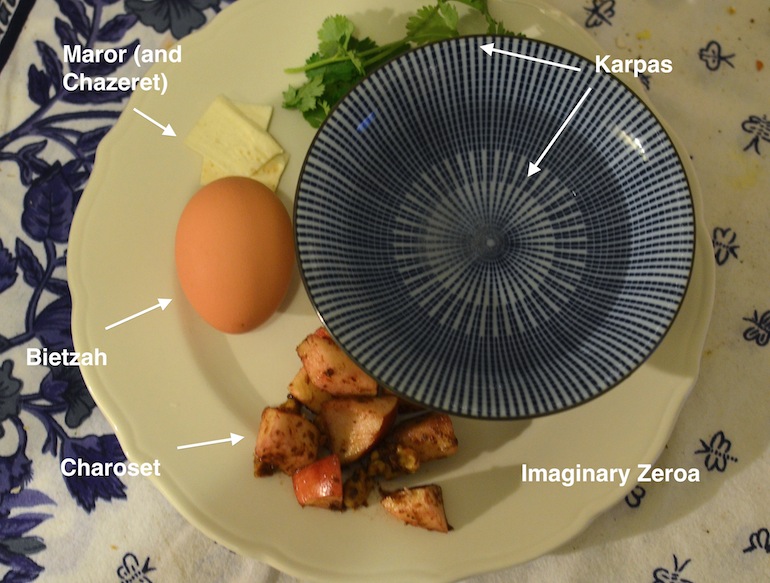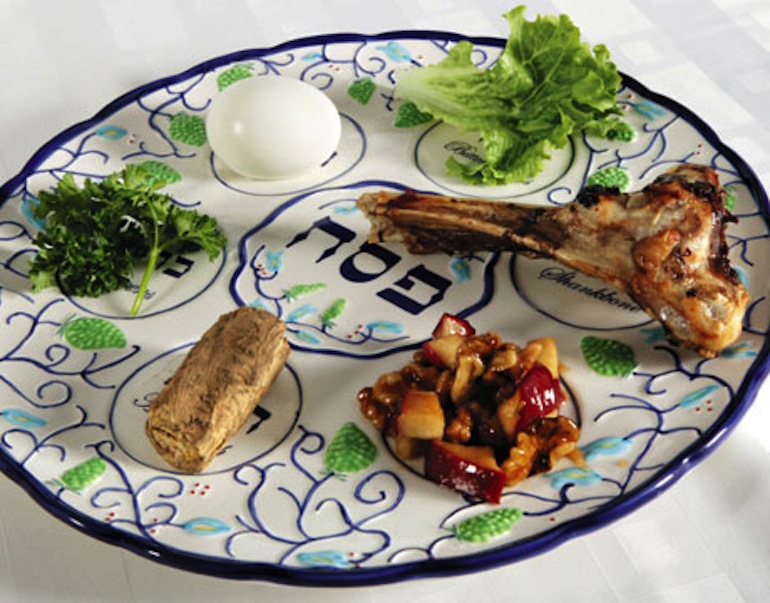Passover begins this Monday, and whether you knew it or not, millions of people will be celebrating this eight day holiday. It begins with the Seder Dinner. The performance of this dinner tells the story of the liberation of the Israelites from slavery in Egypt. The Seder Plate features six symbolic foods that aid in the retelling of the story. The plate is arranged including the following foods and their appropriated meanings:

Photo by Katya Simkhovich
Maror and chazeret: are one or two bitter herbs used to symbolize the bitterness of slavery. The former is typically ground horseradish or fresh horseradish root which is cut into thin slices or shreds and is eaten with charoset (see below) on matzo. The latter can be romaine lettuce, the roots of which are bitter.
Charoset: A fruit and nut paste made with apples, nuts (walnuts), wine, honey and cinnamon. It is meant to represent the mortar used by Jewish slaves to build the pyramids, and unfortunately from a purely culinary perspective, is very delicious.
Karpas: Is usually parsley (can be a cooked potato or celery) dipped into salt water at the beginning of the Seder as a vessel for the tears of the ancestors who suffered.
Zeroa: A roasted lamb or goat bone to symbolize sacrifice (as animals were often used). Our Seder was incomplete because we didn’t have this, but in a true performance of Seder it is required.
Beitzah: A hard-boiled egg would be offered during festival sacrifice in the Temple in Jerusalem.
And a plate of three matzo will sit off to the side. And a more legitimate (and not made by a college student with limited resources) will look something like this:

Photo by iFood TV
The Seder is the ritual used to introduce a meal that includes much more than just what is on the Seder plate. Dinner itself follows the Seder and can be anything as long as it’s kosher. Our perfect Seder would include brisket and spinach casserole, if we could always have our way. Particularly appealing are the four cups of wine that dinner participants are obligated to drink at specific times of the Seder. Each cup is meant to be one of four deliverances promised by God: “I will bring out,” “I will deliver,” “I will redeem,” and “I will take.” It’s nice when there is added legitimacy to drinking wine.
At our Seder of college kids we played a game of Afikoman – find the piece of broken matzo wrapped in a towel. Afikomen is a half-piece of matzo broken in two during early stages of the Seder and set aside to be eaten as a dessert for after the meal. After getting in touch with one’s competitive spirit to locate a piece of unleavened bread, the winner gets a small prize but honestly victory itself is sweet enough.
Seder means “order” so the order in which eating and drinking and speaking is performed is one of symbolical importance. And while customs will vary amongst families, the essence of the meal is the same; to relive the history of a people who suffered long and unjustly and to inspire conversation about the past so that it may never be forgotten or taken for granted.

